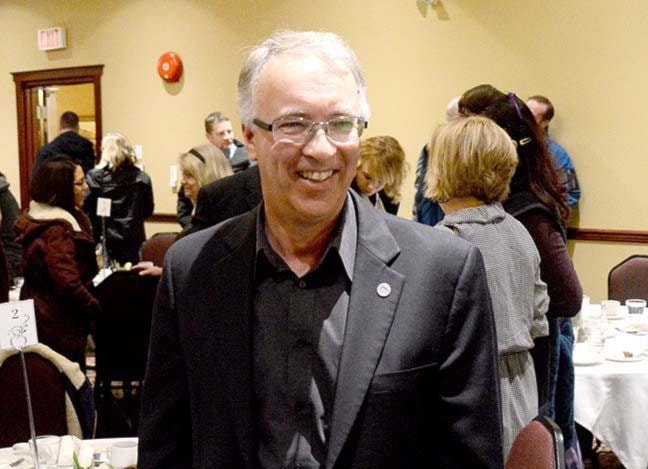Barry Coulter
To sum up in a few words a process of immense complexity, weaving together the past, present and future, is no small feat. But John Rustad, B.C.'s Minister of Aboriginal Relations and Reconciliation, was able to do this at Wednesday's Cranbrook Chamber of Commence Luncheon at the Prestige Inn.
Rustad as keynote speaker talked about the challenges and rewards of his ministry, and gave a brief history of the treaty process in Canada, which stalled when it reached B.C. Rustad said, in large part this was because of the diversity and complexity of First Nations in this province, which is unlike anywhere else.
"There are 203 First Nations in B.C.," Rustad said, "about one third of the total in Canada. And with 34 different language groups ... [B.C. is] the most linguistically diverse jurisdiction in the world."
Afterwards, Rustad gave an update on ongoing treaty negotiations with the Ktunaxa First Nation.
“We’ve been working very closely with the Ktunaxa over the last number of years, and the treaty discussions are progressing,” Rustad said in a media scrum. “We have an incremental treaty agreement — we’re finishing some consultation that’s required, and we’re hoping to see that move forward. That will see some land that will transfer over, which the Ktunaxa plan to use for economic opportunity and to be able to engage more with the whole region.”
Incremental Treaty Agreements (ITAs) allow First Nations and the Province to enjoy shared benefits in advance of a Final Agreement (Stage 6 of the Treaty Process).
“Our hope is that that will progress and will be able to progress to a longer term treaty,” Rustad said.
Rustad added that in addition, the Province has agreements with the Ktunaxa around forestry and mining.
“The Ktunaxa is a unique nation, of course. Linguistically they’re very unique. It’s a nation that although it can be diverse, and has different perspectives on what it would like to see happen, it’s clear in my mind that they want to be able to build a future for their people, engaging in the economy and solving many of the social issues, in a way that is respectful to the environment.
“Our role, as government is how do we work with them to look at that long-term potential, how do we help them enable that. Treaty is the method that they have decided to go down and work through, so we’re trying to figure out if there’s a way we can accelerate that so that that potential can be unleashed.”
During his presentation to the luncheon audience, Rustad discussed the Indian Act and Canada’s relations with its aboriginal peoples, not shying away from its negative aspects: The creation of reserves and the forced movement of populations, the establishment of residential schools, the abolition of potlatch, and the sheer prohibition of rights — aboriginals were prohibited by law from engaging lawyers for example.
Rustad said it wasn’t until the 1950s that aboriginals could hire lawyers. Before that, it was “the dam is built, the flood is coming, you have two weeks to move,” Rustad said.
But as aboriginals started fighting for their rights, a series of court decisions, and the repatriation of the constitution in 1982 finally awarded aboriginals fundamental rights, including the right to title.
“But no one knew what this meant,” Rustad said. “It was an empty vessel of law [that everyone assumed] the courts would fill.”
But over the years, court cases have determined First Nations’ right to resources on their land, for example, and the requirement that indigenous peoples have to be consulted on government activities, and government, where appropriate, has to accommodate.
“B.C. decided in 2005 to take a path with First Nations that has led to remarkable changes,” Rustad said.
“When you step back and look at what we’ve done over 10 years, it’s quite remarkable how far we have come as a province. Whether it’s changes to our curriculum that now include the teachings of our local history with indigenous people, or whether it is the type of agreements we’ve ventured into … all of that is helping to build reconciliation, but we have some big steps that we need to do, and we really need the federal government to come in and be our partners in their role as part of the constitutional obligations.”
The treaty process has been going on in B.C. since 1992. So far, that process has succeeded in signing three treaties which cover seven nations (Rustad said a fourth treaty wasn’t implemented). “We’re going to have to find a way to improve that if we’re going to unleash that potential.”
